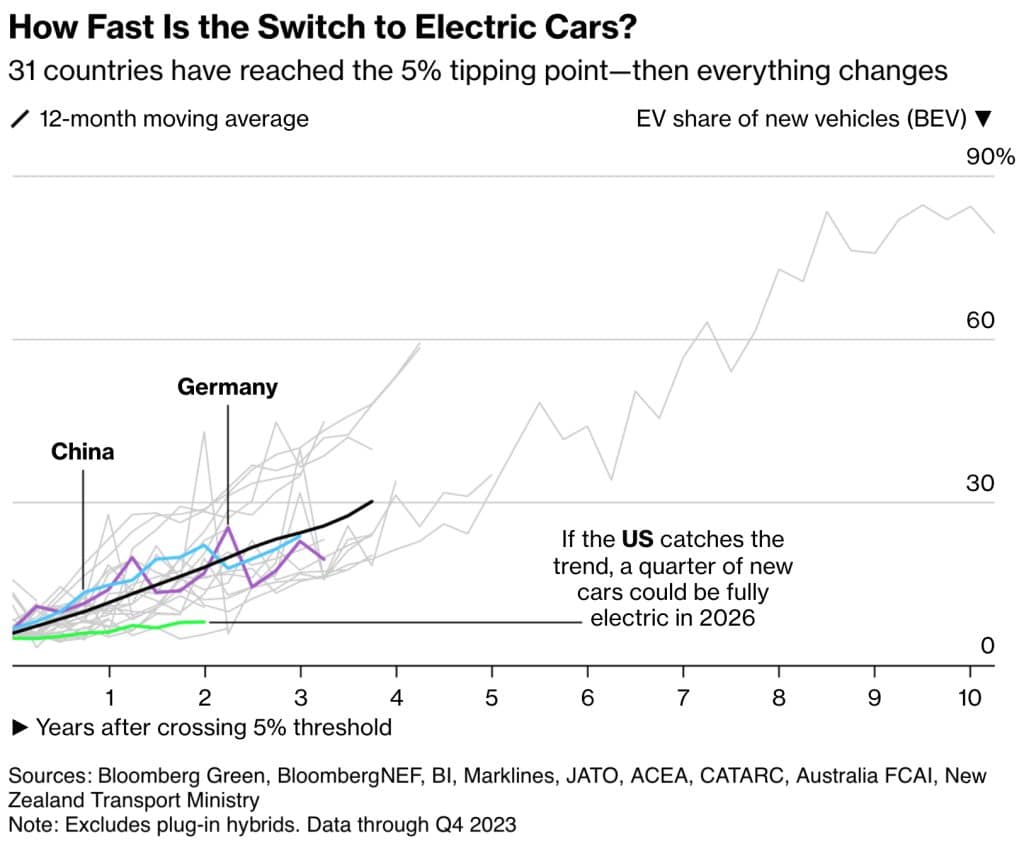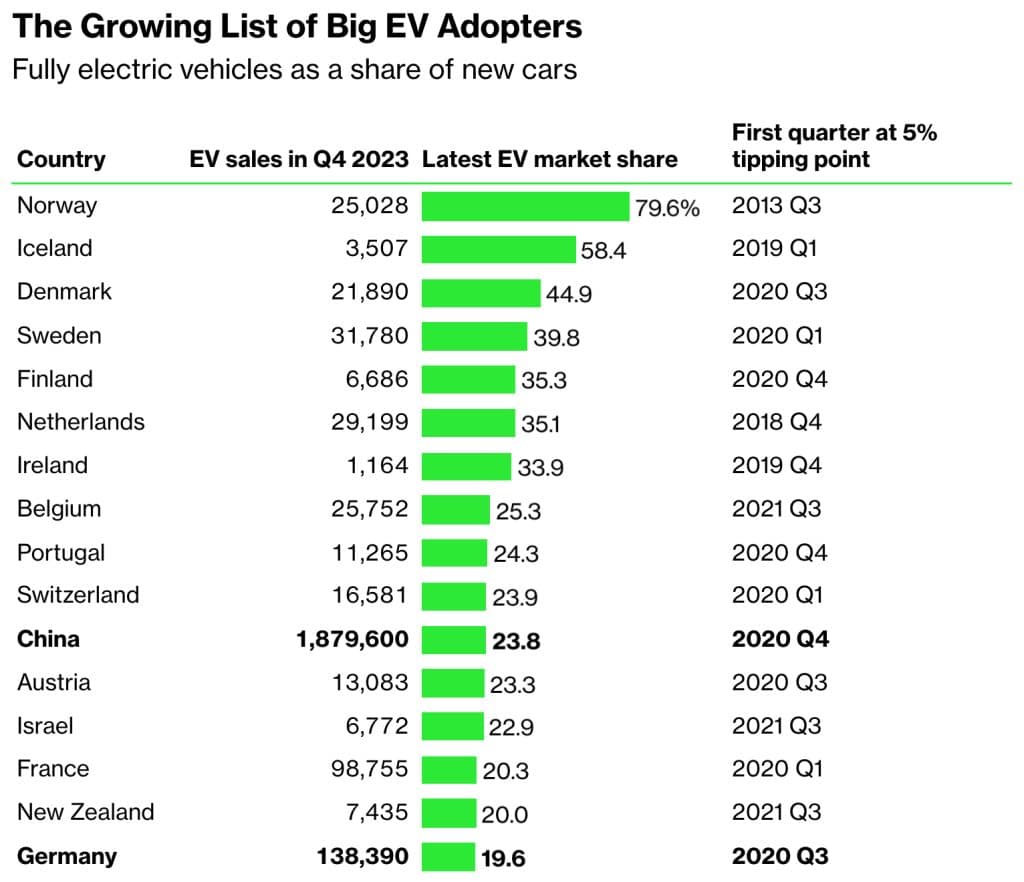- 🌍 BEV adoption has reached a tipping point in 31 countries, up from 19 in 2022.
- 🔋 Battery-electric vehicles (BEVs) now make up 5 percent of overall automotive sales in these countries.
- 📈 Some of the fastest-growing BEV markets are in Southeast Asia and Eastern Europe.
- 💡 Surpassing the 5 percent mark signifies transitioning from early adoption to mainstream acceptance.
- 🛣️ Improved infrastructure and decreasing costs are driving this transition.
- 🌐 Norway, Iceland, and Denmark lead in BEV market share, with the U.S. and Canada surpassing the tipping point earlier.
- ⏱️ Globally, BEVs were at a 14.5 percent adoption rate in Q4 of the reported year.
- 🇺🇸 The U.S. may take around three years to reach a 25 percent adoption rate, potentially by 2026.
In recent years, the automotive industry has witnessed a monumental shift towards sustainability and innovation, largely driven by the increasing adoption of Battery Electric Vehicles (BEVs) worldwide. This seismic change isn’t just a trend; it’s a fundamental transformation that is reshaping the way we think about transportation and environmental impact.

Embracing Electric: The Global Phenomenon
The rise of BEVs has surpassed all expectations, with adoption reaching a tipping point in 31 countries, a significant leap from just 19 in 2022. This surge in popularity is indicative of a growing global consciousness towards cleaner, more sustainable modes of transportation.
The Power of 5 Percent
At the heart of this revolution lies the 5 percent mark – the threshold at which BEVs make up a substantial portion of overall automotive sales in a given country. Surpassing this mark symbolizes a transition from early adoption to mainstream acceptance. It’s a pivotal moment that signals a shift in consumer mindset and industry dynamics.
- Battery-electric vehicles (BEVs) now account for 5 percent of overall automotive sales in these 31 countries, marking a significant milestone in the transition towards sustainable transportation.
- The rapid growth of BEV markets in Southeast Asia and Eastern Europe underscores the global reach and appeal of electric vehicles.
- Improved infrastructure and decreasing costs are playing a pivotal role in driving this transition, making BEVs more accessible and appealing to consumers worldwide.
Leading the Charge: BEV Market Leaders
While the adoption of BEVs is a global phenomenon, certain countries stand out as leaders in this transition. Norway, Iceland, and Denmark lead the pack in BEV market share, setting a precedent for sustainable transportation practices. The United States and Canada have also made significant strides in surpassing the tipping point, signaling a shift towards a more sustainable automotive landscape in North America.

Accelerating Momentum: Towards a Greener Future
As BEV adoption continues to gain momentum, the automotive industry is poised for a transformative shift towards a greener, more sustainable future. With global BEV adoption reaching 14.5 percent in Q4 of the reported year, the momentum shows no signs of slowing down.
- The United States, with its ambitious goals for BEV adoption, may take around three years to reach a 25 percent adoption rate, potentially by 2026. This projection underscores the accelerating pace of change and the growing importance of electric vehicles in shaping the future of transportation.
Conclusion: Driving Towards a Sustainable Tomorrow
The rise of BEVs represents a watershed moment in the history of the automotive industry. With countries around the world embracing electric vehicles at an unprecedented rate, we stand at the brink of a new era of sustainable transportation. As consumers, policymakers, and industry leaders alike embrace the electric revolution, we have the opportunity to drive positive change and build a greener, more sustainable future for generations to come.





